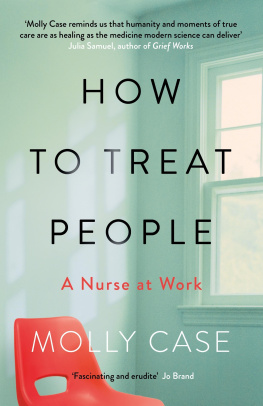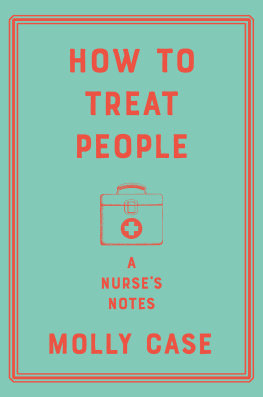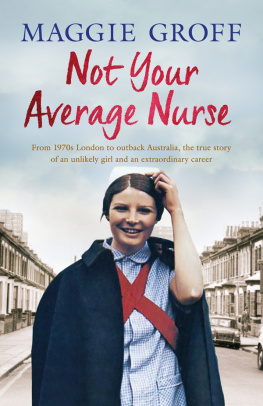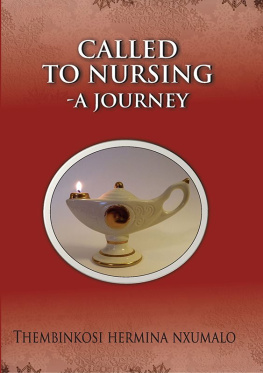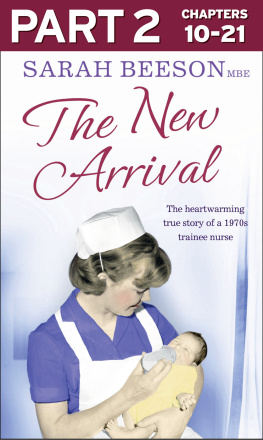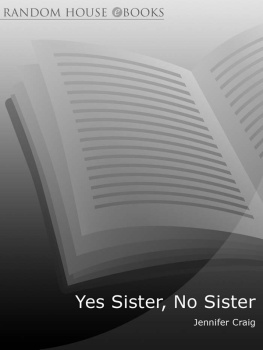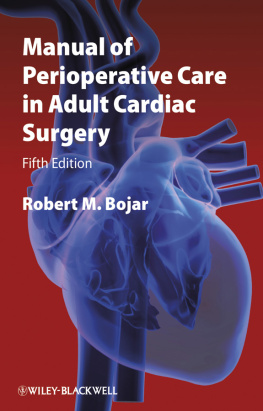Molly Case
How to Treat People
A Nurse at Work

When I was a boy and I would see scary things in the news, my mother would say to me, Look for the helpers. You will always find people who are helping.
Fred Rogers
A month later, it was a warm summer evening in June. South of the river, people were sitting outside pubs, having a drink and eating from stalls, sheltered beneath the ironwork roof of Borough Market. The river was calm, Southwark Cathedral glowed from the inside, the roads were busy with black cabs and buses.
Just after ten p.m., a van drove across the bridge. It picked up speed and mounted the pavement, swerving into pedestrians and running them down. The van continued on towards Borough Market. Three young men got out of the vehicle and ran towards the pubs and the market area. They were armed with twelve-inch ceramic knives with pink blades and pink handles, tied to their wrists with leather straps. They shouted as they ran.
At seven minutes past ten, ambulances were dispatched, police just a minute later. On the streets, people ran in every direction, crying, screaming, throwing crates and chairs at the men wielding the knives. The attackers slashed frantically at anybody they could see; the subsequent knife wounds on the victims bodies were random: face, neck, chest, legs, arms.
By sixteen minutes past ten, all three attackers had been shot dead by armed police.
London hospitals worked tirelessly through the night, off-duty staff coming in to help in emergency departments, operating theatres and the wards where patients were admitted.
I worked on the HDU in the aftermath.
Two days later, I arrived at seven in the morning. A police guard sat on a chair outside the unit; he was tall and thin, with freckles across his nose. He held his hat in his hands and leant his head against the wall. It looked as if he hadnt slept in days.
How are you? I asked.
He smiled, as if the question was too big.
Tired. He sighed and wiped his eyes. Its all right, Im supposed to be relieved in a bit.
Bed soon, I said.
He nodded and rested his head once more.
I pushed the door to make my way into the staff room.
The day staff were sipping coffee and watching the news: reporters talking outside the hospital entrances around the city that we knew so well. Some of the night staff came in and sat down, resting their heads on their colleagues shoulders, birds-nest hair and creased uniforms.
Eight people had been killed and almost fifty were injured.
Out on the unit, we looked after people with chest wounds, collapsed lungs requiring chest drains, rib fractures, and blood accumulating in their chests from punctured lungs. These patients slept, and when they woke needed morphine to cope with the pain. Many of them still had blood crusted in their hair and beneath their fingernails despite having been helped to wash by the nurses.
One shift left and the next continued, and when eight oclock in the evening came, the same would happen again, and again the next morning, eight oclock, coffee and toast, eight in the evening, coffee and toast, a baton passed between outstretched hands, tracing the arc and loop of the figure of it, eight in the morning, eight in the evening, on the roadside with the sun going down, in the ambulances, in the resus department, the CT scanner, the operating theatre, on the ward with the sun breaking through the night clouds.
VIKING
UK | USA | Canada | Ireland | Australia
India | New Zealand | South Africa
Viking is part of the Penguin Random House group of companies whose addresses can be found at global.penguinrandomhouse.com.

First published 2019
Copyright Molly Case, 2019
The moral right of the author has been asserted
The publisher is grateful to quote from the following:
, Tulips from Collected Poems by Sylvia Plath 1960, 1965, 1971, 1981 by the Estate of Sylvia Plath. Reproduced here by permission of Faber and Faber Ltd.
, To My Daughter by Stephen Spender. Reproduced with permission of Curtis Brown Group Ltd, London, on behalf of the Estate of Stephen Spender.
Copyright The Estate of Stephen Spender 1953.
This book is a work of non-fiction based on the life, experiences and recollections of the author. To maintain patient confidentiality and to protect the privacy of individuals, names of people, places, dates and sequences of the detail of events have been changed and certain situations and individuals may have been merged to protect further identities. Any similarities are purely coincidental.
ISBN: 978-0-241-98375-1
This ebook is copyright material and must not be copied, reproduced, transferred, distributed, leased, licensed or publicly performed or used in any way except as specifically permitted in writing by the publishers, as allowed under the terms and conditions under which it was purchased or as strictly permitted by applicable copyright law. Any unauthorized distribution or use of this text may be a direct infringement of the authors and publishers rights and those responsible may be liable in law accordingly.
To my family
ABCDE
Airway. Breathing. Circulation. Disability. Exposure. This is where it begins. I examine the patient from head to toe, ensuring first that there is nothing blocking the airway, that they are breathing. I move along to blood pressure, heart rate, all the elements of circulation, before checking their level of consciousness, their blood sugar and temperature, and finally looking for injury and examining the skin. The one rule of this assessment? To start at the beginning and only move on once youre satisfied that each part, the lungs, the heart, the kidneys, is working.
A is always where we start. A. The beginning of the alphabet. From the Greek, alpha. The biographer and essayist Plutarch describes how his grandfather referred to it as the simplest sound. The formation of air in the mouth and the motion of the lips around the word means it needs only to be gently breathed forth.
A. The first letter learnt in school, the beginning of sentence creation, of language, of conversation, of stories yet to be told. The letter itself shaped with its protective pointed roof, under which we might stay a while and think of what more to say. Or cross its connecting bridge below and move on to the next. Without A, the airway, a person cannot live.
Whilst studying the roots of medical language at nursing school, I learnt that the prefix a or an means without. Apathetic: without emotion; amoral: without morality; anaesthesia: a lack of sensation.
For us as nurses, A is both the roof we can stay beneath and the bridge we must cross. If there is a problem with A, the airway, we stay put until we figure out how to fix it. If all is well and the airway is clear, we cross over into B, breathing. But we must start at the beginning.
The anatomy of the airway: the upper respiratory tract the nasal cavity, pharynx and larynx, which leads to the trachea once its flap of cartilage closes over the oesophagus. Atmospheric air passes through the nose or mouth, is warmed, moistened and filtered and arrives in the lungs in order for gas exchange to take place: oxygen delivered around the body, carbon dioxide sent away in the form of an exhalation. Without a patent airway, a person is unable to breathe. Complete airway obstruction is silent. It may be the quietest way to die.

